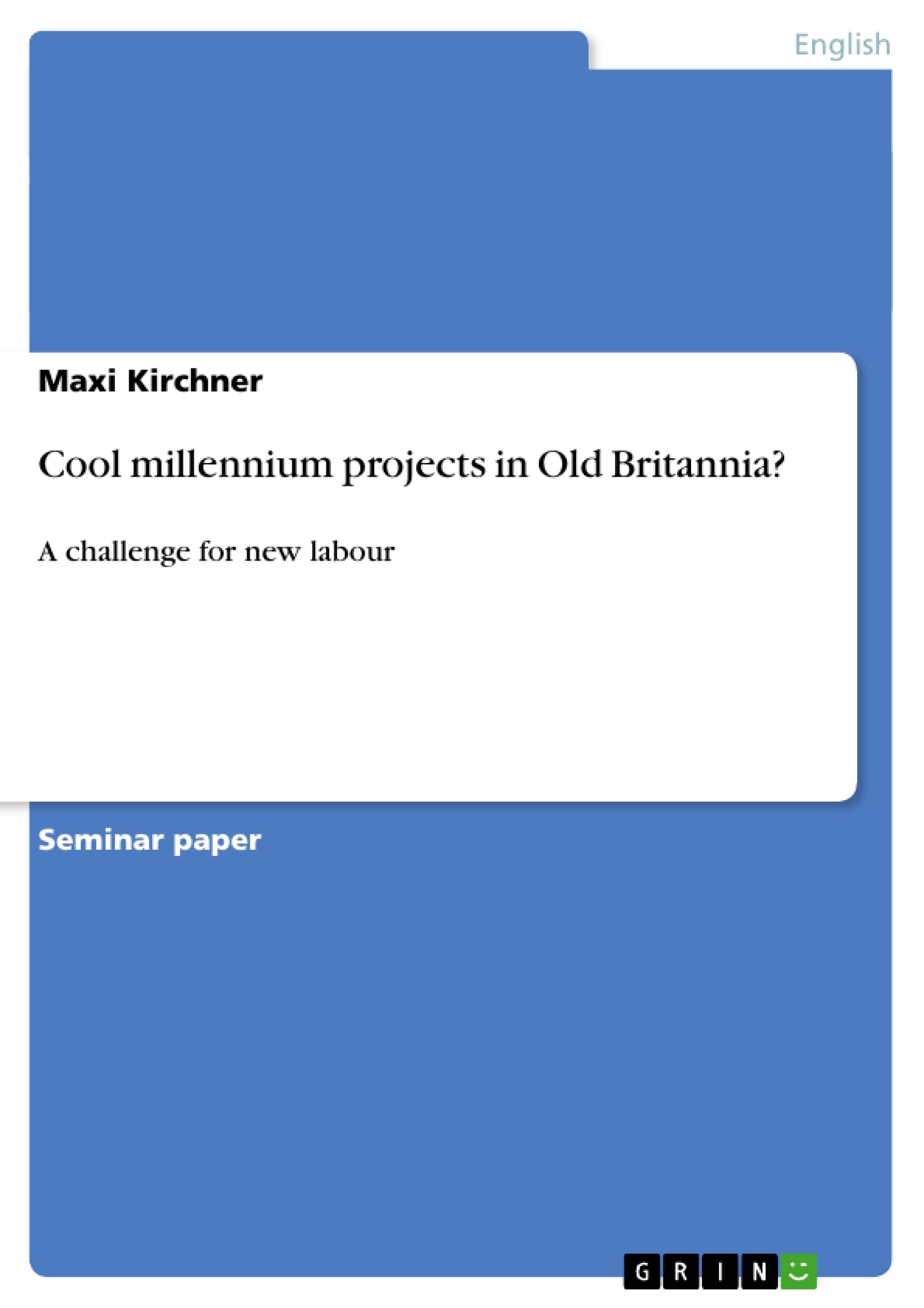The turning of the millennium was not only nervously expected by computer
experts because of the millennium bug, but it also left its imprint on British political
and cultural history. This date in the calendar, 2000 years after the birth of Christ,
has offered a unique opportunity to celebrate human achievements and was a good
reason to speculate about the future.
This paper wants to discuss the reasons and the role of the millennium
projects realised by the Labour government towards the end of the 20th century.
Inhaltsverzeichnis (Table of Contents)
- I. Introduction
- II. Reasons for millennium projects
- 2.1. Cool Britannia
- 2.2. Third Way
- 2.3. Creative Industries
- III. Examples of millennium projects
- 3.1. The dilemma of the Millennium Dome
- 3.1.1. First ideas for the Dome
- 3.1.2. The site and architecture
- 3.1.2.1. Facts on architecture
- 3.1.2.2. The problem of location
- 3.1.2.3. The millennium show
- 3.1.3. Today's and future use
- 3.1.4. Possible problems and reasons for the failure
- 3.2. An example of a successful project
- 3.2.1. The Eden project
- 3.1. The dilemma of the Millennium Dome
- IV. The role of London in Britain's millennium identity
- V. Conclusion
Zielsetzung und Themenschwerpunkte (Objectives and Key Themes)
This paper examines the reasons and the role of millennium projects undertaken by the Labour government in the late 20th century, exploring the government's objectives in creating these projects and analyzing their impact on British society.
- The concept of "Cool Britannia" as a strategy to rebrand Britain as a modern, creative nation.
- The influence of the "Third Way" policy and its focus on creative industries in achieving the goals of Cool Britannia.
- The successes and failures of specific millennium projects, such as the Millennium Dome and the Eden Project.
- The role of London in shaping Britain's millennial identity.
- The potential risks and challenges associated with large-scale prestige projects and their impact on national identity.
Zusammenfassung der Kapitel (Chapter Summaries)
The introduction sets the context for the discussion, highlighting the significance of the millennium year and the government's ambition to create lasting monuments to human achievement.
Chapter II focuses on the rationale behind the millennium projects. It examines the concept of "Cool Britannia," its goals, and its potential impact on British identity. The chapter also discusses the "Third Way" policy and its connection to the creative industries, which played a key role in realizing the objectives of Cool Britannia.
Chapter III provides case studies of two prominent millennium projects: the Millennium Dome and the Eden Project. It explores the design, construction, and reception of the Dome, highlighting its challenges and potential reasons for its failure. It also offers a contrasting perspective by examining the success of the Eden Project.
Chapter IV investigates London's role in shaping Britain's millennial identity, analyzing the city's significance as a center of cultural and creative activity.
Schlüsselwörter (Keywords)
This paper examines the themes of Cool Britannia, Third Way, creative industries, millennium projects, national identity, the Millennium Dome, the Eden Project, and London's role in shaping Britain's millennial identity.
- Quote paper
- Maxi Kirchner (Author), 2004, Cool millennium projects in Old Britannia?, Munich, GRIN Verlag, https://www.grin.com/document/85091



